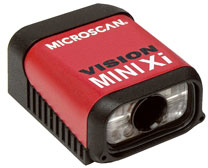6 Advantages of Ethernet Connectivity for Automated Scanning Applications

When managing the commonly high speeds involved with automated barcode scanning and vision environments, it’s crucial that your barcode readers can communicate data at the rates that the system and environment require. The type of interface you decide to use on your devices can help or hinder production. Most scanner offer options for RS-232 serial and USB connectivity but Ethernet offers distinct advantages for optimizing efficiency in automated systems.
- Faster data speeds – Ethernet connections offer high-speed data transfer that won’t limit production.
- Unlimited connections to the PC – With several independent Ethernet connections, PCs can manage multiple tasks in parallel for optimal productivity.
- Unlimited distance from the PC – Span greater physical distances without losing data speed and move or centralize PCs away from the production floor.
- Remote device management – Control devices anywhere there is a network connection and troubleshoot systems without leaving the office.
- Standardized cables – Common connectivity with all Ethernet equipment for no-hassle networking.
- Easy integration to MES and ERP – Ethernet-based MES and ERP systems pair naturally with Ethernet devices saving integration time and equipment.
Technical Considerations for Controlling ESD in Electronics Manufacturing

Mastering ESD control has always been critical to achieving high production yields, and it will become even more important in the next few years. While the industry has a solid understanding of ESD safety in manual operations involving personnel, there is room for improvement in automated applications. To be effective, ESD control programs must ensure that automated handling equipment is capable of handling tomorrow’s highly sensitive devices.
The Cost of ESD
ESD impacts productivity and product reliability in virtually every aspect of electronic environment. Despite the effort made over the past decade, ESD still costs the electronics industry billions of dollars every year. Industry experts attribute an estimated 8 to 33% of all product losses to be caused by ESD. The individual cost of these devices themselves range from a few cents for a simple diode to several hundred dollars for complex hybrids. However, ESD damage affects more than just the loss of devices. It affects production yields, manufacturing costs, product quality and reliability, customer relationships, and ultimately, profitability.




